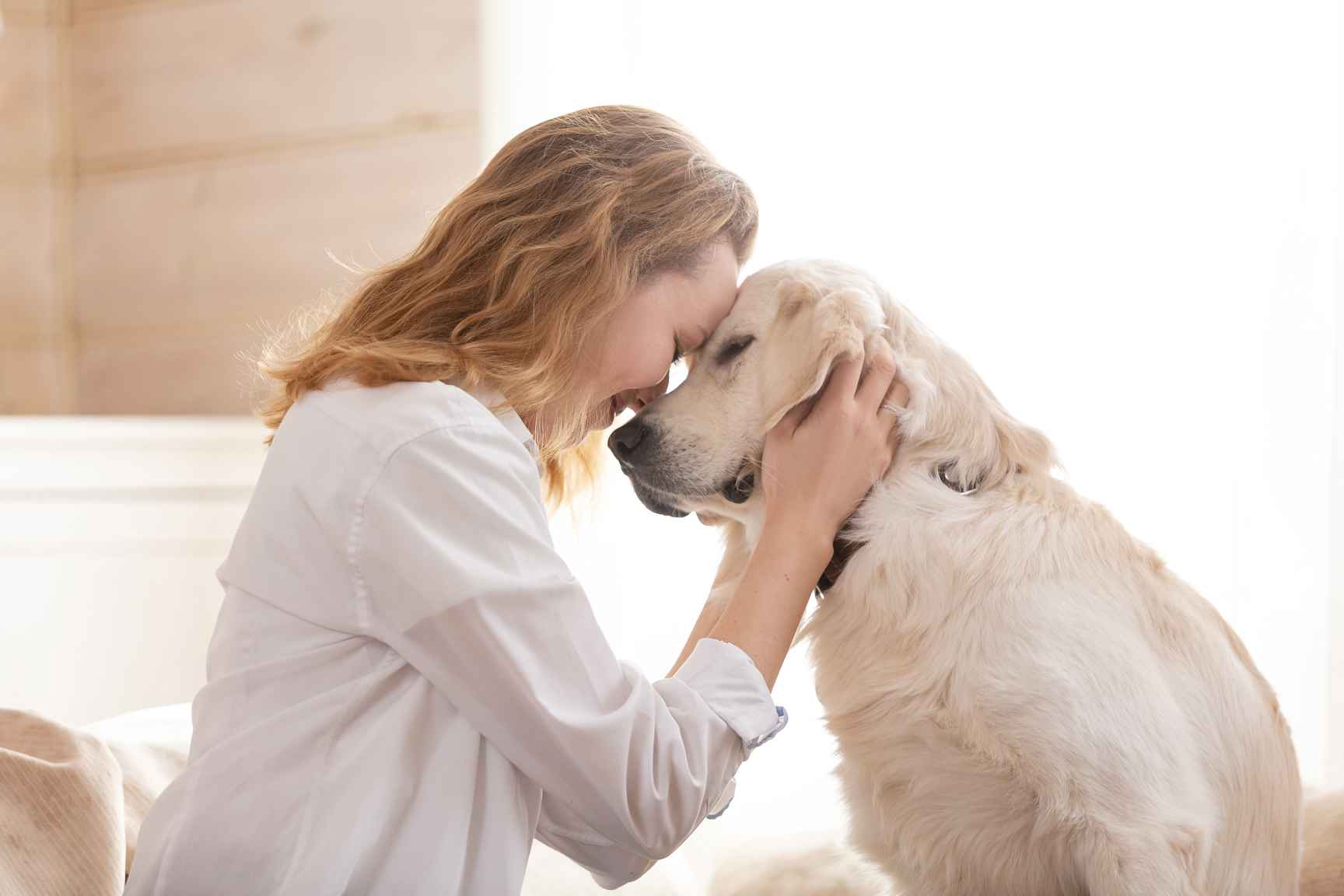Has your dog recently lost a leg? Are you thinking about having one of their limbs amputated? Of course, this is a big deal that can be very upsetting. If you have not gone through this process before, you may be lost to begin with. But it is important to understand that prosthetics have been developed over the years and they can help our furry friends just like they can humans. This means that your pup’s life is not over if they have an accident.
Connect with a verified veterinarian in minutes. Licensed vets are available 24/7 to answer your questions. No need to worry about your furry family member.
Let’s spend some time learning about prosthetics for dogs and how they can help your furry friend gain some freedom.
What is a Prosthetic Limb for Dog?
If your dog has been in an accident or there is a reason why one of their limbs has to be removed, you may be introduced to a prosthetic limb by your vet. The first question you are going to have is what exactly is a prosthetic limb? Essentially, this is an artificial device that can be used to replace the missing limb for your dog. The point is that it can act like the limb that is missing so your pooch does not have a lower quality of life.
The prosthetic limb is not something that is generally made and available in stores. This means that it is not cheap or readily available. Instead, it is custom-made so that it is unique and suitable for your pup. We all know that dogs come in lots of different shapes and sizes. The same applies to prosthetic limbs. Your dog will have to be fitted for a device so that it can restore normal function for their own body. This will involve a significant amount of money and it will take some time.
Normally, there has to be a part of a limb remaining for a prosthetic leg to be an option for your pet. This is going to allow for a secure fit and proper mobility. But there are options available. For example, there are some prosthetics that have straps that wrap around your pup, as well as wheel devices for canines with more than one missing limb.
Why Might a Dog Need a Prosthetic Limb?
There are a number of reasons why your pooch may need prosthetics. Of course, there are the obvious reasons that a lot of people think about. For example, your furry friend has been in an accident and their limb has to be amputated. But there are others why dogs are missing a limb in the first place. For example, birth defects can happen. This can mean that their limb does not grow properly and it is best to have them amputated. Therefore, they may need prosthetics to help them have a better quality of life in the future.
In addition, cancer can lead to a dog having to have their limb amputated. This is a surgery that can save their life. Of course, they will be used to having four legs. This might seem like a pup cannot enjoy the life they once had. But this is untrue. That is exactly why prosthetics were invented. There are a lot of dogs out there that recover well when they lose a limb. In fact, it probably affects the owners the hardest! It can be upsetting to see your pooch missing a limb and learning how to walk all over again. There will be canines that are able to run around and even climb up and down stairs unaided. But over time, it may be beneficial to consider prosthetics for the longevity and wellbeing of your furry friend. Otherwise, they can develop other injuries.
Of course, there are also dogs that do not respond well to losing a limb. They can become anxious and lose their confidence.
The good news is that prosthetic limbs can help your beloved companion gain back their confidence.

Review symptoms, medications & behavior to keep your pets healthy with a Vet Online in just minutes.
Ask a Vet Live NowThe Process of Getting a Prosthetic Limb
First of all, a veterinary surgeon will have to amputate the limb. This is going to mean that your dog has to recover from surgery first before you can think about starting the prosthetic process. It is important that your pup’s soft tissues heal around the area where the amputation has happened. Your vet will always keep you updated on the progress of your pet. It is likely you will have to leave them for the afternoon and come back for them after surgery. The vet will keep in contact to calm your nerves and give you updates on your beloved companion.
Then you will be able to start the process of getting a prosthetic limb for your pup. This will involve a cast being made so that a custom-made prosthetic can be issued for your pooch. This will require an appointment with a specialist or at your vet and it can take a few hours. The manufacturing process for the prosthetic limb can take around four to six weeks in total, in addition to the fitting process. This means that it is not a quick process and you should be prepared to wait. It can be an exciting time to know that your dog will be able to exercise again. To begin with, prosthetics should only be worn for a few hours. This allows the skin to adjust to the new environment and can prevent pain arising for your beloved companion. Over the course of a few weeks, you will be able to increase the time that they wear their new prosthetic limb.
One important thing to know if your dog is going to have a prosthetic leg is that they must be a healthy weight. This is imperative for their wellbeing and to avoid problems. Otherwise, your dog will have to carry excess weight and this puts more pressure on their limbs. Therefore, if your dog is overweight, it may be required that they lose fat first. This can be achieved through some exercise if this is possible, as well as a restrictive and controlled diet.
What are the benefits of a Prosthetic Limb?
Your dog may have had their foot or leg removed. Perhaps they were used to long walks and running off leash. This will all change if they have an accident. Losing a limb can seem like the end of the world. But a prosthetic limb can be just what your dog needs and it offers many advantages. A prosthetic limb can give your dog some excitement back into their life. Once they have learned how to use a prosthetic limb, they can regain their mobility and movement. This should be almost back to normal. As long as it fits and you practice proper care, your canine can keep their device for life.
Prosthetics can be good for your furry friend. When they have a replacement limb for the one that has been removed, this can take the pressure off the healthy limbs. It provides more balance that allows them to enjoy exercise without so much pain and discomfort. In addition, it can help your pooch build and improve their core strength. This is going to help your pup’s neck and back. There are some dogs out there that are missing a limb and they do not let this affect them. In fact, they can still run around and enjoy life as if nothing has ever happened. But one consequence of not choosing a prosthetic device is that they can develop other limb injuries over the years. This happens because they rely on them more since they are missing another limb.
Prosthetic Limbs Take Time
Your pooch will take time to get used to using their prosthetic limb. While there is no recovery time, they may take a while to understand how to use it and be confident wearing it. Physical therapy sessions can be a good way for your dog to learn how to adjust to their new life. For example, there are some dogs that are quick learners and they will know to put their full weight on the device in just a few weeks. However, some canines will take longer. It may take several months until they are able to walk around unaided with their prosthetic limb.
It may be best to wait until your furry friend is an adult before having a prosthetic limb fitted. They will still be growing for many months and this can mean a lot of money on prosthetic devices.
If you allow your pooch to learn to cope without one of their limbs, this can help core strength so they are ready to be fitted for a prosthetic.
What is the Cost of Prosthetics for Dogs?
It is important that you budget before thinking about investing in prosthetics for your pooch. This process can take some time and cost a lot of money. You want to make sure that you are making the right decision for your canine. The first step of the process will involve making an impression casting. This is going to ensure that the final prosthetic is the right size and shape for your pup. Normally, this step is going to cost around $100. You may also have to pay for the time of a prosthetist or veterinarian consultation. The next step is going to be paying for the final product; the prosthetic device. This cost is going to vary a lot depending on the size of your canine, as well as the size of the prosthesis. Of course, if you have a smaller dog, this means the prosthetic leg is going to cost less than if you had a larger pooch. The range you can expect to pay will vary from $600 to $3,000. Another factor will be whether the prosthetic you need is a foot or leg device, as well as what manufacturer you choose.
It is possible that your veterinarian will instruct for your canine to attend physical therapy. This is going to help them adjust and get used to wearing and using the prosthetic. You can expect each session to cost around $50 to $75. The number of sessions your dog needs will vary and it is best to go with the number that is recommended. Do you have pet insurance? There is a possibility that some insurance companies may cover some of this procedure. Take a look at your policy and ask your company if they do. With the popularity of dog prosthetics growing, there is a possibility that you can have some relief from the costs of your dog’s prosthetic limb.
Ways to Prevent Use of Prosthetics for Dogs
If you are just reading about prosthetics for dogs, there are things you can do to reduce the chance of needing them in the future. Most of this prevention surrounds keeping your pup as safe as possible and away from trauma. You want to avoid the risk of your four-legged friend losing a limb. For example, a lot of accidents can happen if your dog is free roaming. In other words, they enjoy a lot of time off leash. Of course, this is great for exercise and this does not mean that you should not encourage your pooch to run around off leash. Instead, make sure that you can always see your canine when they are roaming and they are not off leash anywhere near busy roads. It is about being a responsible owner and spotting potential dangers before they become one.
Of course, there are going to be some traumas that you cannot easily prevent. For example, your dog may get cancer in the future. The best thing you can do is try to feed your beloved companion a healthy diet and let them enjoy regular exercise. Consider researching more in on a raw diet and the benefits that it can offer or ask a veterinarian for a good diet to follow if you have not had a dog before.
Connect with a verified veterinarian in minutes. Licensed vets are available 24/7 to answer your questions. No need to worry about your furry family member.

Kim
Kim is a talented author, who loves animals especially dogs. She engaged in writing books and articles relating to animals a decade ago. Kim resides in Chicago with her husband and son. The family is the proud owner of a dog and a parrot (Jack and Lily). Kim wanted more than these two pets, but her husband put his foot down... She often visits elementary schools to talk to the kids about what she learned about pets and how they could learn from them.
Review symptoms, medications & behavior to keep your pets healthy with a Vet Online in just minutes.
Ask a Vet Live Now



